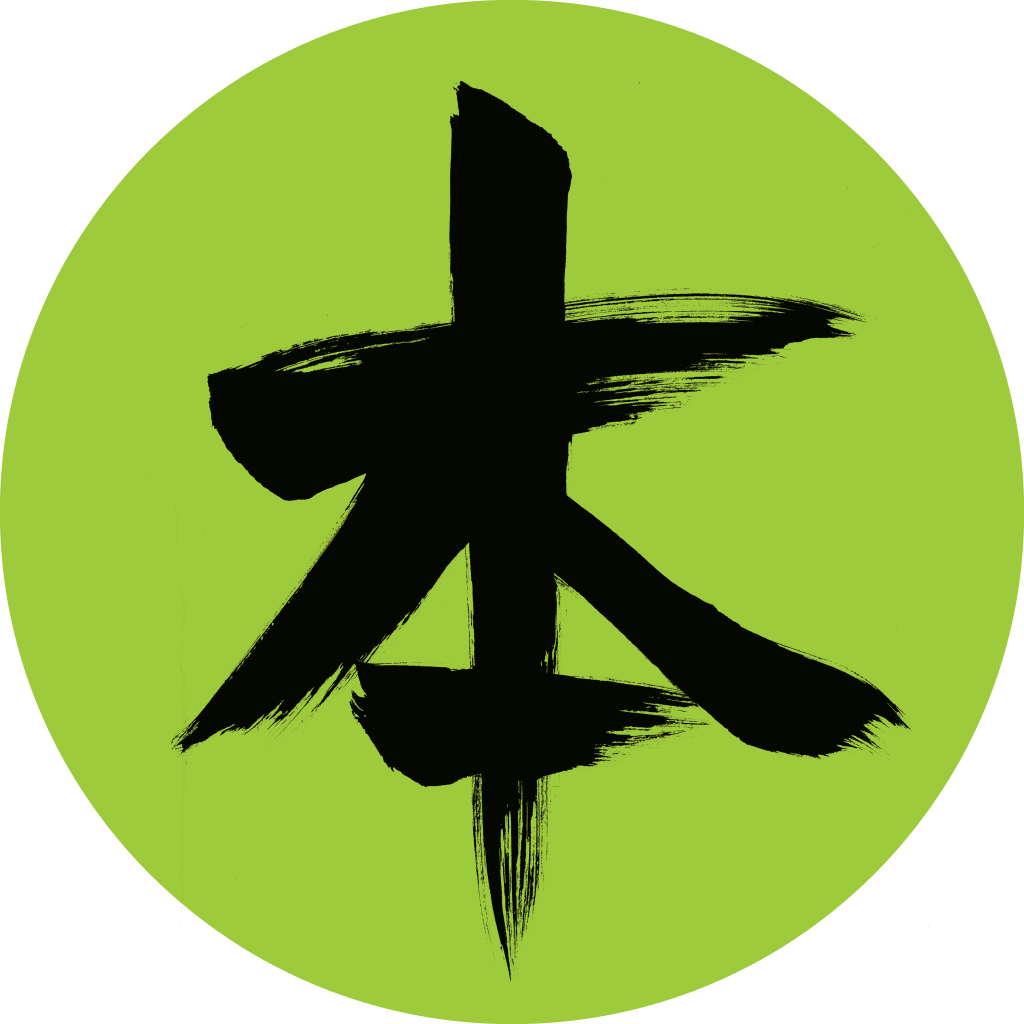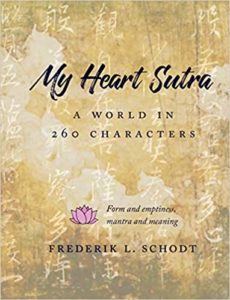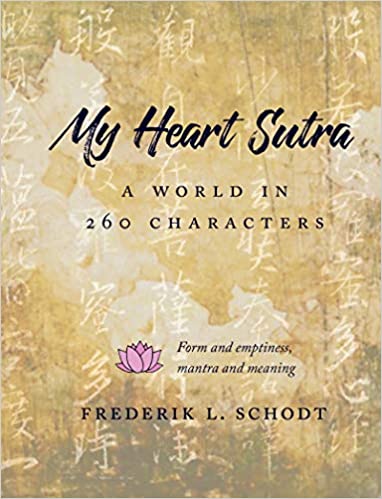Review By Amy Chavez
All over Asia the Heart Sutra soothes minds and eases the burdens people encounter in their every day lives. In Japan, one might catch its rising timbre across a graveyard as a Buddhist Priest chants to the departed in a ceremony honoring the family’s ancestors. A tourist might stumble upon followers at a temple standing and reciting from pocket accordion books, their steady synchronic chant punctuated with the ding of a bell. Grieving spouses go to the local temple to practice writing the 260 characters of the sutra, a practice said to help their loved one’s gain smooth entry into the afterlife. Others trace the letters to accrue merit for their own afterlife. This sutra copying is called shakyo. And yes, American author Frederik L. Schodt tells us, there’s an app for that.
In My Heart Sutra: The World in 260 Characters, Schodt introduces the well-known Buddhist text by tracing his own fascinations with it, starting with his first remembrance of a recitation by Alan Ginsberg in Los Angeles May, 1974.
Later, working from a scroll copy of the Heart Sutra he picked up during his travels, we learn about its origins, history, interpretations, translations and controversies. Over the course of the book, Schodt’s calligraphic existentialist Heart Sutra transforms itself from a mere pretty wall hanging to a parchment imbued with magic, meaning and intrigue.
“It was written in brush and ink on ordinary washi paper, and I later had it mounted as a scroll on Japanese silk fabric backing. When the wind blows through the open window of my room, the wooden rod, or weight, at the bottom of the four-foot-long scroll often rattles gently against the wall. Because of this, over the years the scroll has developed a few creases and a tiny tear, but it is still remarkably unfaded, and its defects add what in Japan might be called a wabi-sabi aesthetic, which values imperfections and transience.”
The sutra was originally brought from India to China by Xuanzang (Genjō in Japanese) and is universally recognized across Asia, permeating various sects of Buddhism. It embodies “perfect wisdom” and enlightenment. It is 1,400 years old.
Some Asians can produce the sutra from rote, and most can chant at least parts of it from memory. English speakers may recognize oft-translated sections such as “Form is no other than emptiness, Emptiness no other than form. Form is only emptiness, Emptiness only form.” Yet few people claim to understand the profound meaning of the Heart Sutra. And in fact, some believe it is impossible to do so. There is even a belief that understanding the sutra would detract from its dynamism. Rather than focus on its meaning, the author encourages us to instead concentrate on the significance of its sounds, healing powers, and its many esoteric conveyances.
The very personal nature of My Heart Sutra is what gives this book its readability, especially to the uninitiated. Schodt describes how the sutra was introduced to the West via poets, writers and Buddhist priests: Gary Snyder, Alan Ginsburg, D.T. Suzuki, and Shunryū Suzuki (who arrived in the U.S. in 1959 and became the first head of the San Francisco Zen Center). The author, a translator himself, touches on translations of the sutra into English by Samuel Beal (1863), F. Max Muller (1881, who used an ancient extant copy written on palm leaf), D. T. Suzuki (1935), Edward Conze (1958), the 14th Dalai Lama (2005) and Thich That Hanh (2014).
The author takes us on a wild chase down the Silk Road as we follow the Heart Sutra from it’s Sanskrit origins in India to Cave 17 in the Mogao Grottos of China, then across the seas to the British Museum, and the sutra’s appearance in the Clash’s CD: Combat Rock. The author ruminates on the Chinese version vs. the Sanskrit, ponders whether it is more a sutra, an incantation, or a spell and weighs in on one scholar’s suggestion—deemed scandalous by some—that the sutra may be a back translation from Chinese to Sanskrit. Schodt, known for his books on manga, anime and robots, is quick to clue in readers to the sutra’s modern mellifluous renditions such as those by the musician-priest Kanho Yakushiji that the Buddhist priest posts to his popular YouTube Channel.
Its always a plus when a book’s content is true to its title, and although there is one rather long scholarly section, the book is nonetheless a highly personal and entertaining read. Schodt even appeals to the inner tourist in us by telling where we can find the largest Heart Sutra (hint: Somewhere in Hamamatsu), “see” Genjo’s skull (hint: Somewhere in Saitama) and interact with the Heart Sutra robot (hint: Somewhere in Kyoto).
Schodt asks the reader to think of the Heart Sutra as a “magic spell” meant to be felt rather than understood, that it be hailed for it’s lyricism and ability to compel deep thought through the vehicle of sound. Schodt suggests that the mantra has meaning because it has power and it has power because it has meaning. And that this power is derived from the Buddha and the verity of the sutra’s influence over 1,400 years.


